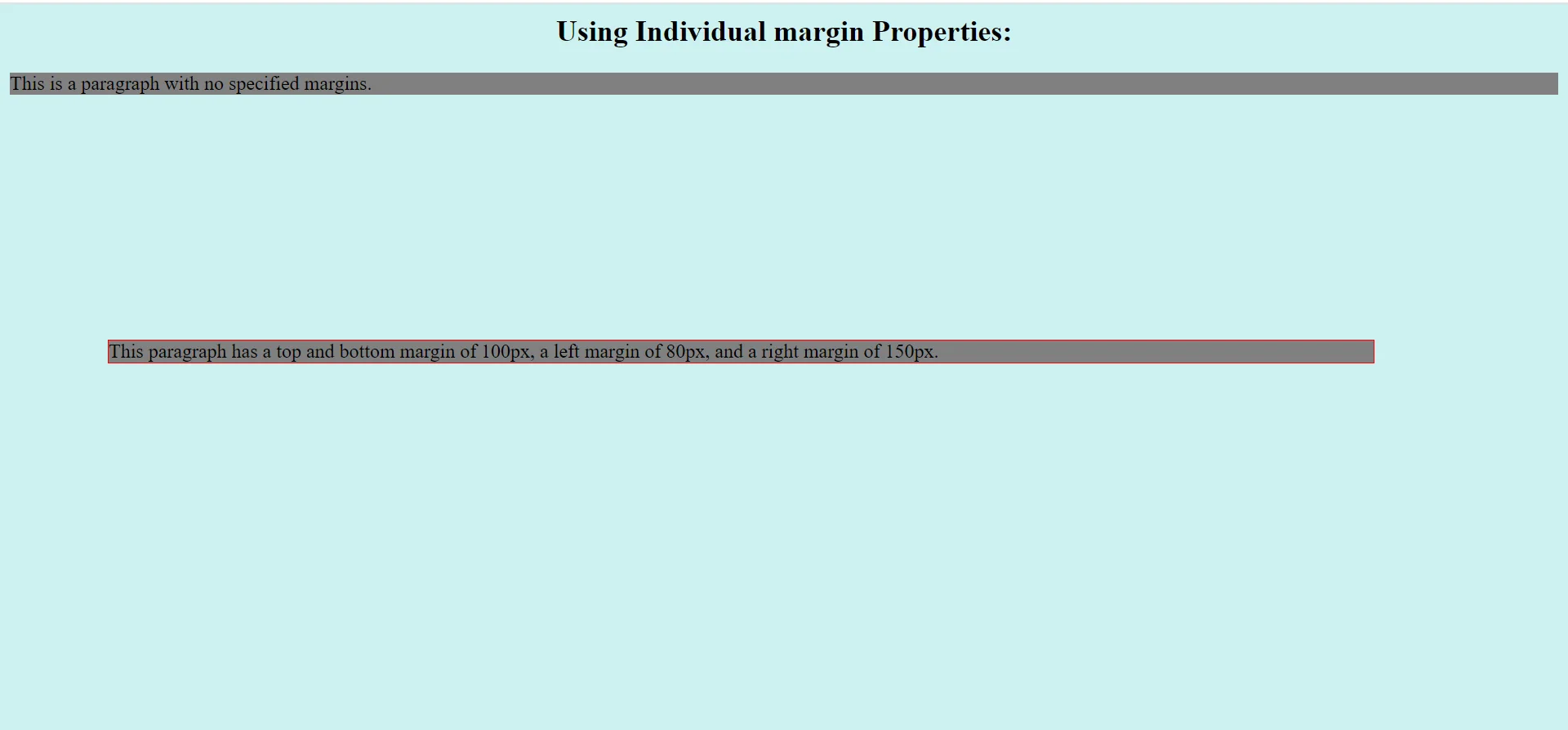
CSS Margins
In CSS,In CSS, margins provide spacing around elements, defining the distance between an element's border and adjacent elements. They can be set uniformly using the margin property or individually (margin-top, margin-right, margin-bottom, margin-left). Negative margins adjust positioning, and margin collapse can occur when vertical margins of adjacent elements meet. Margins are specified in pixels, ems, percentages, or viewport units and play a critical role in layout design and spacing control within web development.
1. Single Value: Setting a single value applies the same margin on all sides of the element.
This sets a margin of 40px on all sides (top, right, bottom, left).
2. Two Values: Setting two values applies the first value to the top and bottom margins, and the second value to the left and right margins.
Here, 40px is the top and bottom margin, and 20px is the left and right margin.
3. Four Values: Setting four values applies them individually to the top, right, bottom, and left margins, in a clockwise order starting from the top.
This sets 40px top margin, 20px right margin, 30px bottom margin, and 10px left margin.
4. Auto: Setting margin: auto; horizontally centers an element within its containing block by equalizing the left and right margins. This is often used in conjunction with a fixed width.
Auto is often used in conjunction with a fixed width.

In conclusion, margins in CSS provide crucial spacing between elements, enhancing readability and aesthetic appeal in web design. They enable precise control over layout by creating consistent or varied gaps around elements. Margins also facilitate centering elements horizontally and vertically within their containers, ensuring balanced and visually pleasing compositions. Overall, mastering margin usage optimizes user interface clarity and enhances user experience on websites..